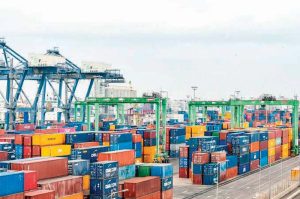To survive and grow, the CV supply chains have turned resilient. Deepti Thore looks at continued efforts to modernise and withstand disruptions in the first part.

CV supply chains continue to add layers of resilience. Coming out of one disruption after the other, the rising commodity prices continue to put margins under pressure. The supply-chain bottlenecks like semiconductor shortages, container shortages, growing port traffic, western sanctions as a fallout of the Russia-Ukraine war crisis are known to have had a direct bearing on the CV supply chains. To deal with these, the CV industry has identified technological advances to realign the supply chains as a means to remain competitive and sustain business. According to a Deloitte study on the supply-chain disruptions with the backdrop of recent turn of events, to deal with crisis, there is a need to ensure that the risk management frameworks and systems are in place. Through technology, companies must understand risks in the tier2 market and beyond. They must activate alternate sources of supply, consider onshoring wherein they could relocate business to lower cost locations within national borders or consider friendshoring wherein they could partner countries with a strong adherence to norms and values for operating in a global economy. Sreedevi R, Assistant Professor, Operations and Supply Chain Management, wrote a paper titled ‘Multi-dimensional supply chain flexibility and supply chain resilience: the role of supply chain risks exposure’. According to the paper, natural disasters and unexpected disruptive events have forced practitioners and researchers to build resilience capability into their systems to survive and grow in tempestuous and turbulent times. This study empirically examined the effect of Multi-Dimensional Supply Chain Flexibility (MDSCF) in improving Supply Chain Resilience (SCRES) in a high risk environment.
It is suggested that companies must consider updating inventory policy and planning parameters for critical materials, understand the impact of commodity inflation in supplier and customer contracts, and monitor logistics constraints and increase focus on cyber security risk monitoring internally with key suppliers and prepare for disruption in operations in the conflict region besides planning on a global scale for multiple scenarios. Lauding the resilience of organisations Rajesh Jejurikar, Executive Director, Auto & Farm Div., Mahindra Group spoke of creating success for an organisation by giving back.The need is to play a game for a long term, he exclaimed. “Building resilience is to have purpose and the ability to bounce back,” he opined. While drawing attention to the potential disruptions at multiple levels in the supply chain, he stressed on the need to put in place processes to pick up warning signals. Citing organisations with a streamlined process as better placed with inventory management to face a crisis, he urged organisations to pick-up signals that a changing tide could test the company’s mettle. According to a study presented by Kearney, the larger the company, the larger the network of suppliers. This in turn implies that a fluctuation would have a larger impact from a complex and interconnected supply chain. At the same time, digitalisation is having a disruptive impact on the automotive industry, changing the requirements for speed, agility, flexibility, and complexity.
Introducing transparency
Debmallya Chatterjee, PhD, MTech, MSc, MIT | Professor and Head – Operations & Supply Chain Area, S.P. Jain Institute of Management & Research, in one of his papers wrote about ‘Modelling the barriers of supply chain transparency in the post-COVID-19 scenario’. According to him, transparent supply chains have slowly gained prominence because of their utility in resolving sustainability concerns and improving operational efficiency and decision making. It requires companies to know more about their upstream chain and communicate it to their internal and external stakeholders. This in turn helps build resilience into the supply chains, making it possible for companies to respond quicker in the face of disruptive events like the Covid-19 pandemic. Despite both the necessity and obligation, companies are struggling with implementing a transparent supply chain because of non-definite reasons. In his paper, he identifies and models the barriers. Results suggest that customer privacy forces other barriers in the system and requires they be given an adequate importance while forming the data pipeline for transparent supply chains. Vague short-term ROI, low technology adoption, and underdeveloped infrastructure also emerged as critical barriers that managers should carefully mitigate while striving for transparent supply chains.


Mitigating risks
As per a recent Mckinsey report, organisations should take action to mitigate risk and build towards a more resilient future. The need is to transform the supply chain and for that the companies need to re-skill and redeploy their workforce to achieve the required levels of efficiency in their operations. Dr. Sajeev Abraham George, Professor, Operations & Supply Chain, Chairperson, PGDM Programme, S P Jain Institute of Management and Research (SPJIMR) explained, “Matching capacity with demand is crucial. If there is no match then there is inventory involved.” The need is to navigate through the disruption to emerge stronger. It is also crucial to identify the gaps in the supply chain and modernising supply-chain IT too. In addition to this, creating end-to-end transparency, investing in digitisation, improving communication and collaboration, embracing e-commerce and building talent are some of the other measures which the companies can adopt. He drew attention to the introduction of flexibility into the supply chains to cope with different demand and supply scenarios and seizing new opportunities caused by shifts in consumer behaviour are crucial focus areas for companies. As part of its efforts to address the global supply chain crisis, India has also collaborated with the U.S. As per the US Trade Representative (USTR) promoting a transparent, rules-based trading system for market economies and democracies is crucial.
SCRI initiative
India and Australia have become strategic partners under Supply Chain Resilience initiative (SCRI).The two nations recently signed the Economic Cooperation and Trade Agreement (ECTA), an interim trade agreement. Both the countries will work towards contributing to the resilience of the supply chain and stability in the Indo-Pacific region. The agreement will provide zero duty exports to 100 per cent tariff lines from India to the Australian market, besides benefiting labour-intensive sectors. A similar bilateral agreement is in place with Japan. The Trade Ministers of India, Japan and Australia formally launched the SCRI in 2021. Acknowledging the fact that the pandemic had an unprecedented impact due to various factors, the ministers from these countries noted the importance of risk management and continuity plans in order to avoid supply chain disruptions and affirmed their commitment to strengthen resilient supply chains. Some of the possible policy measures included supporting the enhanced utilisation of digital technology and supporting trade and investment diversification. Some of the initial projects of the initiative included sharing of best practices on supply chain resilience and holding investment promotion events and buyer-seller matching events to provide opportunities for stakeholders to explore the possibility of diversification of their supply chains.























